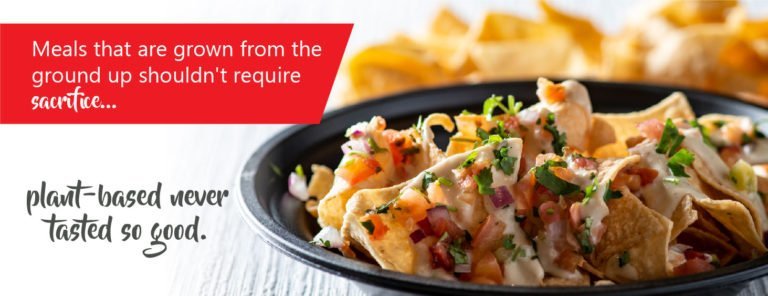I am constantly trying to find ways to get more vegetables into my family’s diet. My kids definitely fall into the macaroni and chicken nugget connaisseur realm. By ordering delivery or dining at environmentally friendly restaurants that fall into the whole foods category that we discussed in our past blogs, I feel like a semi-competent parent knowing that their meal is packed with healthy grains, beans and vegetables that are not processed.
But my ultimate goal is to try to add more plant-based meals to my weekly menu. I am always on the lookout for plant-based restaurants or dining options that at least offer veggie based meals. Bonus points if I can find veggie meals that my kids will eat!
I have read so many positive research studies about how adding more plant-based meals to your diet helps your health, mood and waistline. I just have to convince my kids to get on board. Plant-based restaurants that offer a variety of menu options, may be just the ticket!
Transitioning to Plant-based: Slow and Steady Wins the Race
I reached out to a good friend who was raising her kids vegan. I asked her how she transitioned her family to a plant-based diet. She had some really good ideas that I started to try with my own family.
Start Small and Simple: Take meals you currently make and slightly change them. Like spaghetti, leave out the meat and add a lentil mixture.
Something to Look Forward to: Add “Meatless Mondays” to the calendar and make it a celebration! Something the kids look forward to. Get them involved in making table decorations and helping choose their favorite dishes that you can alter. Tater Tot Nachos and Sweet Potato Brownies. Who wouldn’t love that dinner?
Snack Attack: Whole grain breads with nut butters and chopped veggies turned into finger foods are great easy plant-based snacks for hungry tummies. Add sauces and dips that little fingers can use to dip carrots, celery, apples, peppers and jicama into.
Plant-based Meals and the Planet
Eating more plant-based whole foods not only benefits my family’s health, but I am also helping my community and planet when I choose a whole foods meal over processed foods.
The Physicians Committee for Responsible Medicine has identified key impacts that benefit the planet when we choose whole foods.
Help reduce the impacts of climate change. Food production produces an estimated 30 percent of total greenhouse gas emissions, with animal products contributing the vast majority. In fact, a serving size of meat has 20 times more greenhouse gas emissions than a serving of vegetables. Plant-based diets contribute significantly less greenhouse gas emissions.
Save water. It’s hard to imagine, but agriculture accounts for about 70 percent of freshwater use, making it “the world’s largest water-consuming sector.” The Water Footprint of Food gives a great illustration of how much water a common turkey sandwich takes to make; my mind was blown when I saw that it takes 162 gallons of water and 104 of those gallons are just for the ⅕ pound of turkey. Meat in general uses a huge amount of freshwater, which includes raising, feeding and processing the meat.
According to Waterfootprint.org, the differences in how much water it takes to produce whole foods versus meat and dairy is extreme. The examples below show how many gallons of water it takes to produce one pound of each food item.
Tomatoes: 22 gallons
Cabbage: 24 gallons
Cucumber: 28 gallons
Potatoes: 30 gallons
Apples: 83 gallons
Wheat Bread: 154 gallons
Avocado: 220 gallons
Eggs: 573 gallons
Chicken: 815 gallons
Pork: 1630 gallons
Butter: 2044 gallons
Beef: 2500-5000 gallons
A blog post titled “How Eating More Plants Can Save Lives and the Planet”, by the Physicians Committee for Responsible Medicine discusses how, if the U.S. cut animal product consumption by half, our food production would require 37 percent less water.
Like I said before, I live in Las Vegas, a very dry area, where everyone watches their freshwater consumption religiously. Seeing these numbers and knowing that water is such a precious resource, I feel compelled to swap a few meat meals for plant-based meals every week for my family. Little changes do add up!
Whole Foods vs Processed Foods
When you think of processed foods, frozen dinners, chips, candy and soda may come to mind. But frozen vegetables, canned foods and boxed food are also processed foods because of the additional needs that the machinery and pre-cooking or freezing process creates. Water, electricity, fuel and packaging are all part of what it takes to create processed foods. By choosing whole foods like fruits and vegetables, less water, energy and packaging is needed. This is a win for my planet, my family and me!
Plant-based Restaurant Menu Options
Ori’Zaba’s serves plant-based meal options that my kids love! Burritos stuffed with whole grains, beans and fresh veggies fill my teens’ hungry bellies. Freshly made guacamole and scratch made salsas put a smile on everyone’s face. The option to order meals in a salad form or wrap makes parents happy too!
I love to add Jackfruit Carnitas to my burrito. The smoky adobo seasoning makes this plant-based filling irresistible. I feel like I’m sitting in a cantina in Mexico gazing out at the sea when I eat this savory jackfruit.
Eating at a restaurant that has a whole foods menu means I can feel good about what I am eating and about what I feed my family. Plant-based menu items allow everyone to taste new items and expand their palate. We are learning that whole foods taste amazing and help the planet. That’s a double win in my book and even more reason to continue to order from whole foods restaurants!
